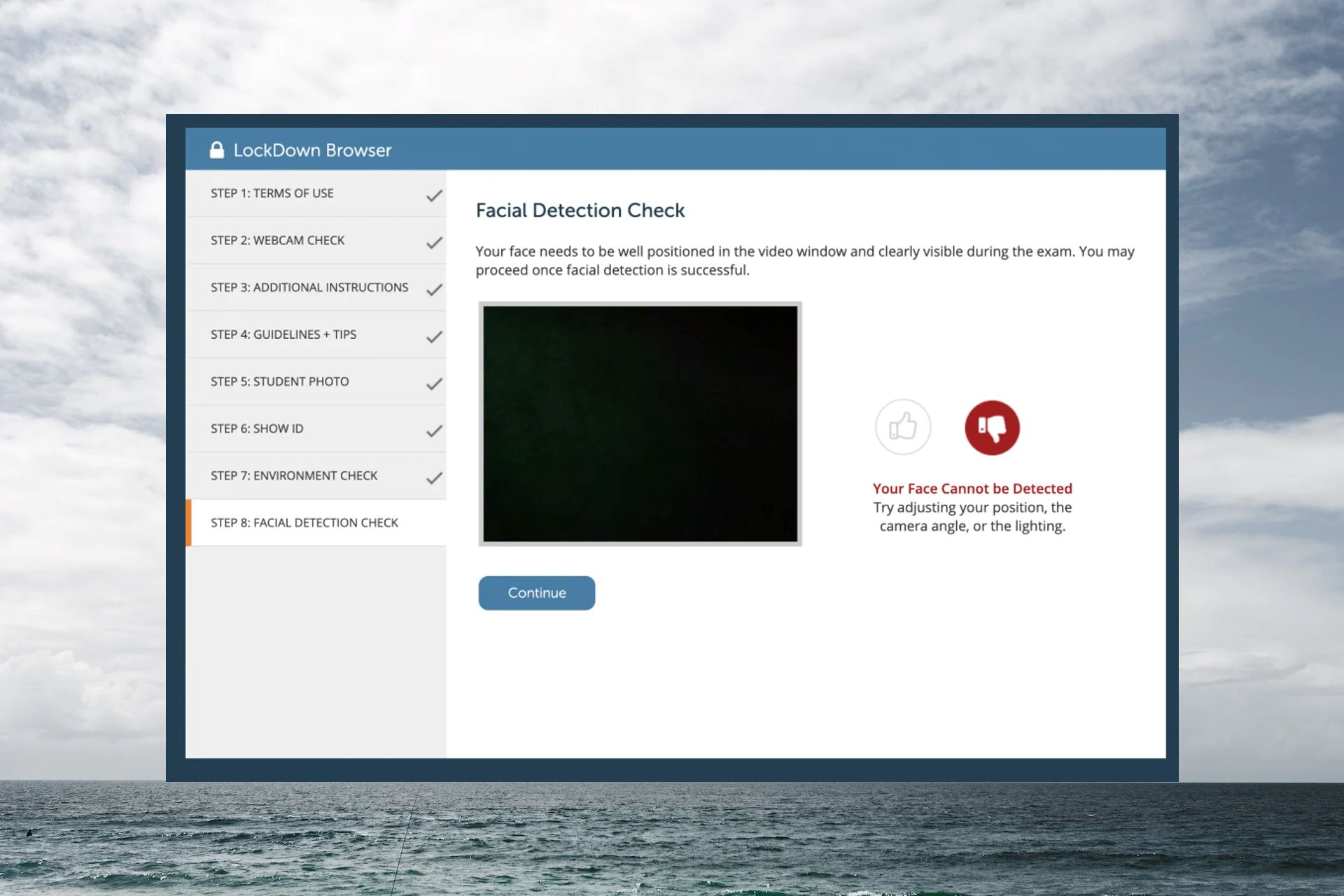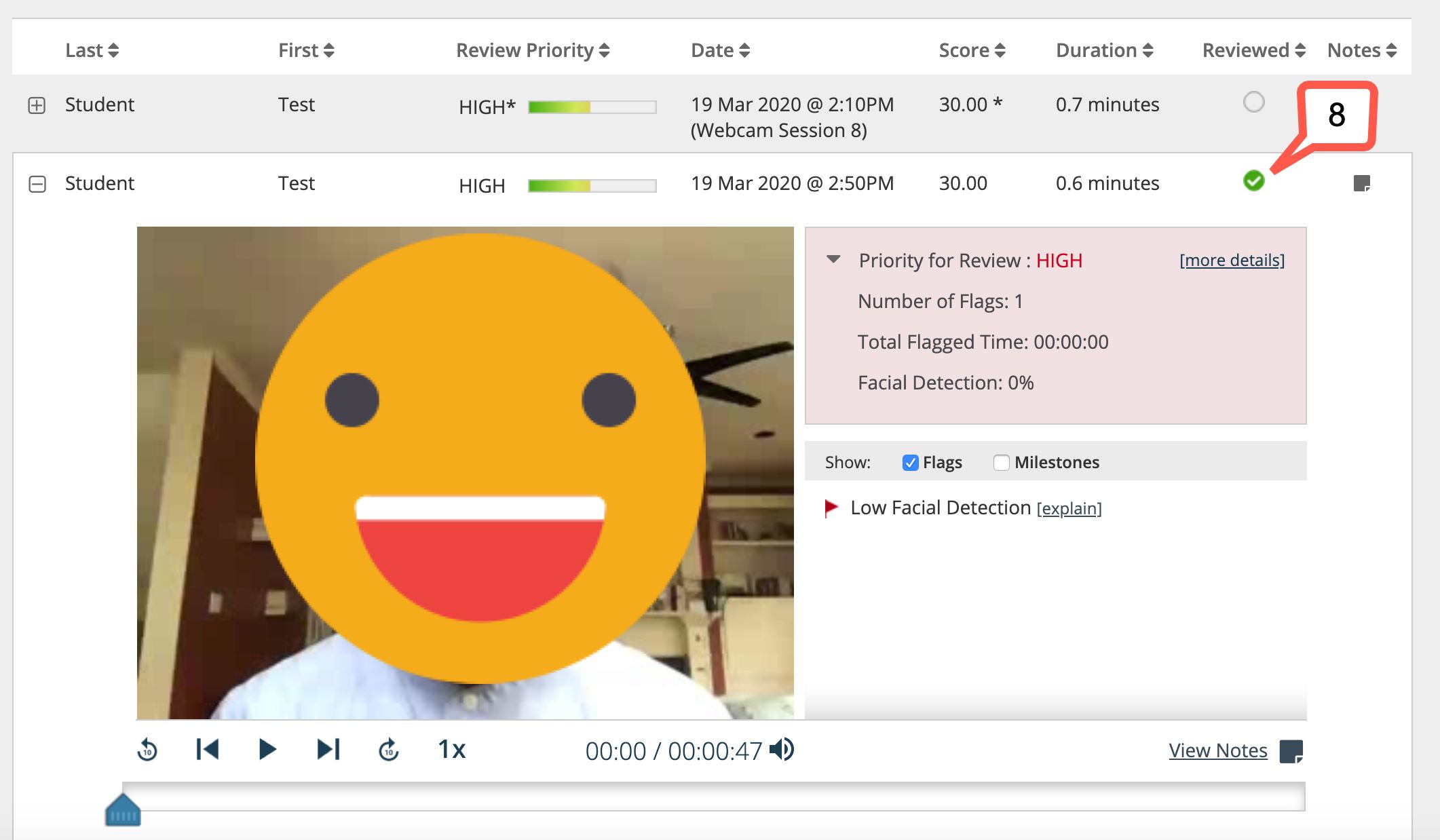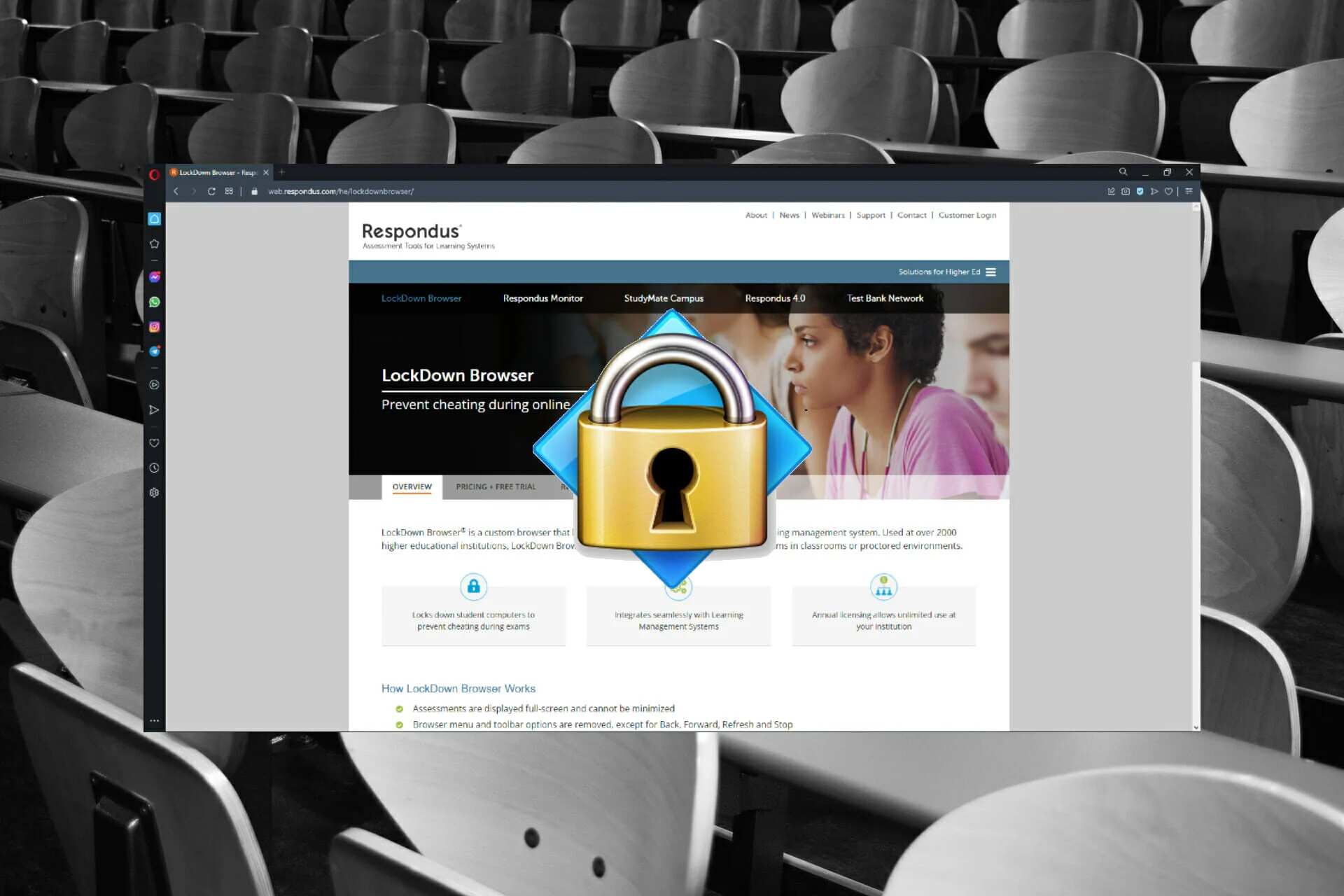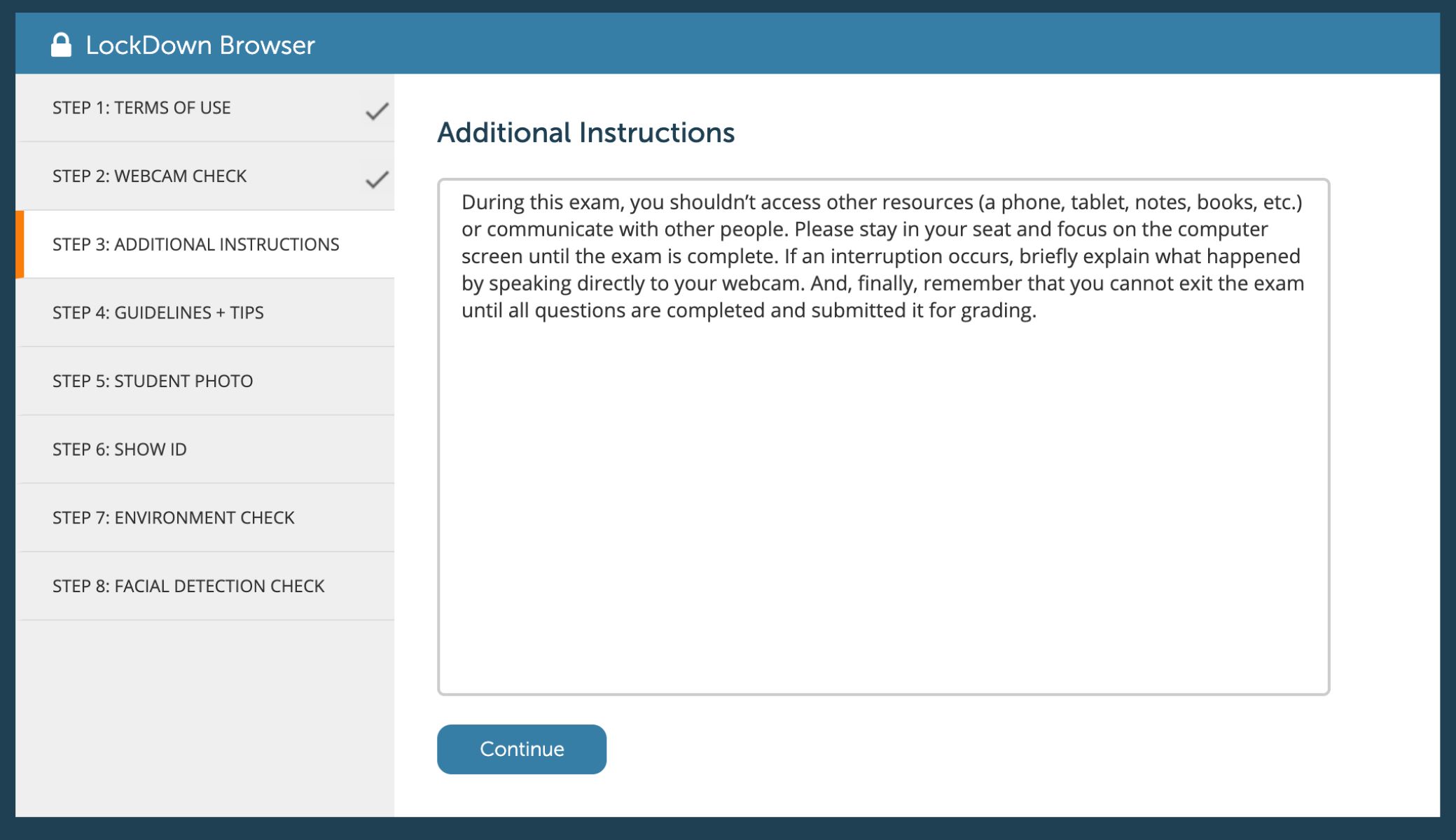Introduction
In today's digital age, academic institutions and organizations are increasingly turning to technology to facilitate assessments and examinations. With this shift, the need for secure and controlled online testing environments has become paramount. This is where the concept of a lockdown browser comes into play. A lockdown browser is a specialized web browser that restricts a user's ability to access other applications, websites, or resources during an online assessment. It ensures the integrity of the testing process by creating a controlled environment in which students or test-takers can complete their exams without the risk of cheating or unauthorized access to external information.
The use of lockdown browsers has gained traction in educational settings, particularly in higher education and certification programs, where the need for secure online testing is critical. By implementing a lockdown browser, institutions can mitigate the potential for academic dishonesty and maintain the credibility and validity of their assessments. Additionally, organizations that conduct remote employee training and certification exams can also benefit from the security and control offered by lockdown browsers.
As the demand for online testing solutions continues to grow, the role of lockdown browsers in ensuring the integrity of assessments has become increasingly significant. In the following sections, we will delve deeper into the definition, functionality, features, benefits, and limitations of lockdown browsers, shedding light on their impact on the online testing landscape.
Definition of a Lockdown Browser
A lockdown browser is a specialized web browser designed to create a secure and controlled environment for online assessments and examinations. It serves as a critical tool for academic institutions, certification programs, and organizations that conduct remote testing, ensuring the integrity and validity of online exams. When a user launches a lockdown browser, it restricts their ability to access other applications, websites, or resources on the device, effectively preventing any form of digital cheating or unauthorized assistance during the assessment.
The primary purpose of a lockdown browser is to maintain the sanctity of online testing by eliminating the possibility of students or test-takers using external resources to gain an unfair advantage. By confining the user to a specific testing interface and preventing access to external content, the lockdown browser creates a controlled testing environment that closely mirrors the conditions of a traditional in-person examination. This level of control is essential for upholding academic honesty and ensuring that the assessment accurately reflects the knowledge and abilities of the test-takers.
Lockdown browsers are equipped with various security features and protocols to prevent unauthorized activities during online assessments. These may include disabling access to other web pages, blocking the use of external applications, and monitoring the user's behavior to detect any suspicious or prohibited actions. Additionally, some lockdown browsers incorporate webcam monitoring and screen recording functionalities to further enhance the security and integrity of the testing process.
In essence, a lockdown browser acts as a virtual proctor, overseeing the online testing environment and enforcing the necessary restrictions to uphold the fairness and credibility of the assessment. Its role in preventing cheating, maintaining test security, and preserving the validity of online exams makes it an indispensable tool for educational institutions, certification bodies, and organizations seeking to conduct secure remote assessments.
As the landscape of online education and remote testing continues to evolve, the significance of lockdown browsers in upholding academic integrity and ensuring fair assessments remains paramount. Their ability to create a controlled and secure testing environment makes them a vital component of the digital testing infrastructure, contributing to the reliability and trustworthiness of online examinations.
How Does a Lockdown Browser Work?
A lockdown browser operates by imposing stringent restrictions on a user's ability to navigate outside a specific online testing environment. When a test-taker launches a lockdown browser to begin an online assessment, the software assumes control over the device's functionalities, effectively limiting access to unauthorized resources and applications. This controlled environment is essential for maintaining the integrity and security of the online exam.
Upon initiating the lockdown browser, it typically enters a full-screen mode, preventing the user from minimizing, resizing, or exiting the testing interface. This ensures that the test-taker remains focused solely on the assessment without the ability to switch to other windows or applications. Additionally, the lockdown browser disables keyboard shortcuts and hotkeys that could potentially be used to circumvent the restrictions, further fortifying the controlled testing environment.
To prevent unauthorized web browsing, the lockdown browser restricts access to external websites by disabling the address bar and navigation buttons. This effectively prevents the user from navigating to other web pages or seeking assistance from online resources during the assessment. Furthermore, the browser may employ URL filtering to block specific websites or domains, reinforcing the prohibition of external content access.
Incorporating advanced security measures, some lockdown browsers utilize webcam monitoring and screen recording functionalities to actively monitor the test-taker's behavior during the exam. This serves as a deterrent to academic dishonesty and provides proctoring capabilities in the virtual environment. The webcam monitoring feature enables real-time observation of the test-taker, while screen recording captures the entire testing session, allowing administrators to review the footage for any irregularities or prohibited activities.
In essence, a lockdown browser functions as a digital invigilator, creating a controlled and secure testing environment that mirrors the conditions of a traditional in-person exam. By restricting access to external resources, preventing unauthorized activities, and implementing monitoring mechanisms, the lockdown browser upholds the integrity of online assessments and ensures that the test results accurately reflect the knowledge and abilities of the test-takers.
As technology continues to shape the landscape of online testing, the role of lockdown browsers in maintaining the fairness and credibility of digital assessments remains indispensable. Their ability to establish a controlled testing environment and prevent cheating is instrumental in upholding academic integrity and fostering trust in online education and certification programs.
Features of a Lockdown Browser
A lockdown browser encompasses a range of features designed to create a secure and controlled environment for online assessments. These features are instrumental in upholding the integrity of digital exams and mitigating the risk of academic dishonesty. Here are the key features of a lockdown browser:
-
Restriction of External Access: One of the primary features of a lockdown browser is its ability to restrict access to external resources and applications during an online assessment. By disabling the address bar, navigation buttons, and keyboard shortcuts, the lockdown browser prevents test-takers from navigating to unauthorized websites or utilizing external tools that could compromise the integrity of the exam.
-
Full-Screen Mode: Upon launching a lockdown browser, it typically enters a full-screen mode, ensuring that the test-taker's focus remains solely on the assessment interface. This prevents the user from minimizing or exiting the testing environment, thereby maintaining a controlled and distraction-free space for completing the exam.
-
URL Filtering: Some lockdown browsers incorporate URL filtering capabilities, allowing administrators to specify and block access to specific websites or domains. This feature adds an extra layer of control by preventing test-takers from visiting prohibited online resources during the assessment.
-
Webcam Monitoring: Advanced lockdown browsers may include webcam monitoring functionality, enabling real-time observation of the test-taker during the exam. This feature serves as a deterrent to academic dishonesty and provides administrators with insights into the test-taker's behavior throughout the assessment.
-
Screen Recording: In addition to webcam monitoring, some lockdown browsers offer screen recording capabilities, capturing the entire testing session for subsequent review. This feature allows administrators to assess the test-taker's on-screen activities, further enhancing the security and integrity of the online exam.
-
Compatibility with Assessment Platforms: Lockdown browsers are designed to integrate seamlessly with various assessment platforms and learning management systems. This ensures that institutions and organizations can implement secure online testing environments without compromising the functionality of their chosen assessment tools.
-
Customization Options: Depending on the specific requirements of an assessment, lockdown browsers may offer customization options that allow administrators to tailor the testing environment to suit their needs. This could include configuring access permissions, adjusting security settings, and defining the parameters of the controlled testing environment.
These features collectively empower lockdown browsers to create a controlled and secure online testing environment, safeguarding the integrity of assessments and upholding academic honesty. As institutions and organizations continue to embrace online testing solutions, the robust features of lockdown browsers play a pivotal role in ensuring fair and reliable digital assessments.
Benefits of Using a Lockdown Browser
Utilizing a lockdown browser offers a myriad of benefits for academic institutions, certification programs, and organizations conducting online assessments. These advantages extend beyond the realm of test security, encompassing the facilitation of fair evaluations and the enhancement of the overall testing experience.
1. Ensures Test Integrity
By confining test-takers to a controlled testing environment, lockdown browsers effectively prevent unauthorized access to external resources, mitigating the risk of cheating and academic dishonesty. This ensures that the assessment accurately reflects the knowledge and abilities of the test-takers, maintaining the integrity and validity of the test results.
2. Creates a Level Playing Field
Lockdown browsers eliminate the possibility of some test-takers gaining an unfair advantage by accessing external materials or online resources during the exam. This levels the playing field for all participants, fostering a fair and equitable testing environment where each individual's performance is solely based on their own knowledge and skills.
3. Enhances Test Security
The robust security features of lockdown browsers, including URL filtering, full-screen mode, and webcam monitoring, bolster the overall security of online assessments. By actively monitoring and restricting test-takers' activities, lockdown browsers contribute to the prevention of unauthorized behaviors, ensuring the confidentiality and reliability of the testing process.
4. Supports Academic Integrity
Institutions and organizations committed to upholding academic integrity benefit from the use of lockdown browsers, as these tools serve as a proactive measure against cheating and unauthorized assistance during online exams. By promoting a culture of honesty and ethical conduct in assessments, lockdown browsers reinforce the values of academic integrity within educational and professional settings.
5. Streamlines Online Testing Processes
Lockdown browsers seamlessly integrate with various assessment platforms and learning management systems, streamlining the implementation of secure online testing environments. This compatibility ensures a smooth and efficient testing experience for administrators, instructors, and test-takers, facilitating the seamless delivery of digital assessments.
6. Fosters Trust in Online Assessments
The use of lockdown browsers instills confidence in the credibility and fairness of online assessments, fostering trust among stakeholders, including students, educators, certification candidates, and organizational leaders. By demonstrating a commitment to maintaining the integrity of digital exams, institutions and organizations build trust in the validity of their testing practices.
In summary, the benefits of using a lockdown browser extend beyond test security, encompassing the preservation of academic integrity, the facilitation of fair evaluations, and the cultivation of trust in online assessments. As the demand for secure and reliable online testing solutions continues to grow, the value of lockdown browsers in upholding the integrity and credibility of digital exams remains unequivocal.
Limitations of a Lockdown Browser
While lockdown browsers offer robust security and control features for online assessments, they are not without limitations. It is essential to acknowledge these constraints to gain a comprehensive understanding of their impact on the testing environment.
1. Device Compatibility
Lockdown browsers may pose challenges in terms of device compatibility. Some versions of lockdown browsers may not be fully compatible with all operating systems or devices, potentially limiting the accessibility of online assessments for test-takers using non-standard or older hardware.
2. Technical Requirements
The effective implementation of a lockdown browser necessitates specific technical requirements, such as system configurations and software dependencies. Test-takers and administrators must ensure that their devices meet the prescribed technical criteria to utilize the lockdown browser seamlessly, which could present logistical hurdles in certain scenarios.
3. User Experience
The use of a lockdown browser can impact the overall user experience during online assessments. Test-takers may find the stringent restrictions on web browsing and device functionalities to be limiting, potentially affecting their comfort and familiarity with the testing environment.
4. Accessibility Considerations
Lockdown browsers may inadvertently pose challenges for individuals with disabilities or those requiring assistive technologies. The restrictive nature of lockdown browsers could hinder the accessibility of online assessments for test-takers who rely on specialized software or accommodations to navigate digital interfaces.
5. Administrative Overhead
The deployment and management of lockdown browsers entail administrative overhead for educational institutions and organizations. This includes the need for ongoing software updates, technical support, and coordination with assessment platforms, adding to the overall operational complexity of online testing environments.
6. Privacy and Data Security
The utilization of webcam monitoring and screen recording features in lockdown browsers raises privacy and data security considerations. Administrators must navigate the ethical and legal implications of capturing and storing test-takers' audiovisual data, ensuring compliance with privacy regulations and safeguarding sensitive information.
7. Potential Workarounds
While lockdown browsers are designed to prevent unauthorized activities during online assessments, there is a possibility of test-takers devising workarounds to circumvent the restrictions. This underscores the ongoing cat-and-mouse dynamic between security measures and attempts to bypass them, necessitating continual vigilance and adaptation in the realm of online test security.
Acknowledging these limitations underscores the need for a balanced approach to leveraging lockdown browsers in online assessments. While they offer valuable security and control capabilities, addressing these constraints is crucial to optimizing the effectiveness and inclusivity of digital testing environments.
Conclusion
In conclusion, the evolution of online testing and assessments has propelled the significance of lockdown browsers in ensuring the integrity, security, and fairness of digital exams. These specialized web browsers play a pivotal role in creating controlled testing environments, mitigating the risk of academic dishonesty, and upholding the credibility of online assessments. By restricting access to external resources, preventing unauthorized activities, and implementing robust security features, lockdown browsers serve as virtual proctors, overseeing the testing process and reinforcing the values of academic integrity.
The benefits of using lockdown browsers extend beyond test security, encompassing the facilitation of fair evaluations, the preservation of academic integrity, and the cultivation of trust in online assessments. Institutions and organizations leveraging lockdown browsers demonstrate a commitment to upholding the sanctity of digital exams, fostering confidence among stakeholders and reinforcing the validity of their testing practices.
However, it is essential to acknowledge the limitations of lockdown browsers, including considerations related to device compatibility, technical requirements, user experience, accessibility, administrative overhead, privacy, and potential workarounds. Addressing these constraints is crucial to optimizing the effectiveness and inclusivity of digital testing environments, ensuring that lockdown browsers serve as enablers of fair and reliable online assessments.
As the landscape of online education, certification programs, and remote testing continues to evolve, the role of lockdown browsers in maintaining the integrity and credibility of digital exams remains unequivocal. Their ability to create controlled testing environments, prevent cheating, and foster trust in online assessments positions lockdown browsers as indispensable tools for educational institutions, certification bodies, and organizations seeking to conduct secure and reliable online testing.
In embracing the advancements of technology and the imperative of secure online assessments, the continued refinement and adaptation of lockdown browsers will be pivotal in shaping the future of digital testing. By navigating the complexities of test security, accessibility, and user experience, lockdown browsers can evolve to meet the evolving needs of educational and professional assessments, ensuring that the integrity and fairness of online exams remain steadfast in the digital era.

























